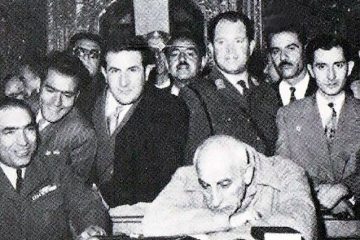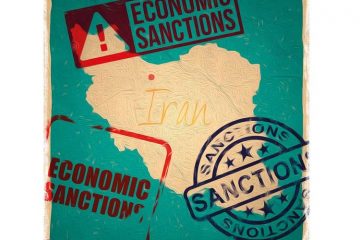The Yankees Blood-stained hands in the Assassinations of the Sixties
Undoubtedly, one of the most horrific and violent political events in the history of Iran after the imperial period is formed in People’s Mujahedin Organization and Forqan group’s assassinations cases. At that time, due to the formation of the new system and also the consolidation of political activists in structural forms and assumptions, we witnessed a kind of partisanship among some pre-revolutionary fighters called People’s Mujahedin Organization and their conflict with the Iranian political clergy. The relentless military and ideological efforts of People’s Mujahedin Organization to seize the pillars of political power, as well as the resentment and hatred against the authorities of the time, had led to a targeted and even blind armed attack on the agenda of the organization.
Targeted armed attack was formed with the aim of conducting terror attacks and assassinating influential figures focusing on the political clergy, including Beheshti, Motahari, etc., and blind armed attack in order to intimidate the general public, eliminate the Iranian religious community, and finally show the incompetence of the forces present to stabilize the country. Naturally, the United States, which had lost its power in the Middle East, especially in Iran after the revolution, took advantage of Mujahedin’s anger and resentment against the ruling regime and worked continuously to facilitate the implementation of their terrorist plans.
After the assassination of Shahid Motahari by the Forqan group, the level of suspicion of the US embassy as a factor in the armed groups against Iran has increased, and such issues have been seen and also observed many times in the documents found in the embassy. Prior to the capture of the US embassy by Imam Khomeini students, this embassy was well able to provide intelligence and even organizational coverage for terrorist groups against Iran, and anti-Iranian groups faced many problems after the embassy was captured. Years later, documents released from the correspondence of Richard Holmes (former CIA director) revealed that the United States was in direct contact with the Forqan group.
The United States support system and tactic for the assassinations of Iranian figures at the time includes the following:
- Making the US Embassy a resource for educating forces who send to religious people for providing the information they want;
- Planning terrorist operations by Tomseth (a prominent American spy and Lincoln collaborator);
- Massoud Rajavi’s direct contact with the White House in the terrorist operations of the sixties and receiving strategic codes from the White House and the Élysée Palace;
- Terrorist training to Mujahedin Organization forces by the CIA in Iraq and Turkey;
- Creating a triangle between the United States, Iraq and Mujahedin Organization in order for Saddam to win the war against Iran, in which the Mujaheddin with the influential forces in the Iranian power institutions were able to reduce the functional level of the war forces and on the other hand the United States accelerated process into the Iranian territory with sending the weapons.
Since the method of killing by the Mujaheddin and even the Forqan group was very surprising and guerrilla, it was able to inflict a lot of damage on the body of the revolutionary forces inside the Iranian government, at that historical moment. The killing of market sellers in bazaar, the bombings in crowded areas, and also the infiltration into the country’s top management were factors that made it difficult for Iranian security officials to identify subversive groups.
The Mujahedin Organization had a publication entitled The Mujahid, in which described the experiences and the operations carried out by this organization; For example, throwing incendiary bombs into government structures such as committees, executions, and the slaughter of some revolutionary figures, the assassination of people by motorcyclists who fire indiscriminately at the religious, and etc.
With the efforts, guidance and support of the United States of America, which accelerated the progress of the people’s Mujahedin Organization, according to the contents of the same Mujahid publication, about 16,000 Iranian people were assassinated by this organization in an eight-year period. These include ordinary people, people of the bazaars, revolutionary employees, middle-ranking officials and even the political clergy. Although the number of assassinations in Iran has been very high, the three-pronged effort of Iraq, the United States, and the Mujaheddin has ultimately failed at the end of the Eight-Year War, and its members were forced to remain on Iraq until the political and international situation improves. No detailed report has been yet released on the level and extent of US military assistance to this organization, but it appears that part of the US arms and military service to Iraq was also provided to be used by the Mujaheddin.
Reference
Inside the Iranian revolution, John D. Stempel (2009)



0 Comments